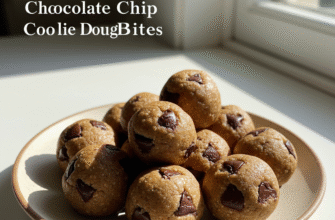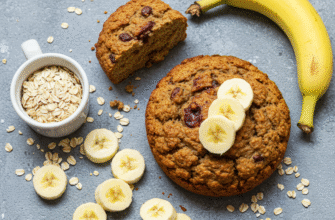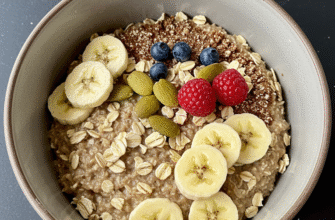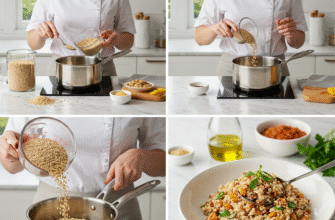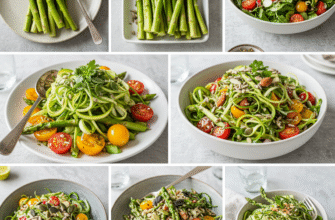Ever felt that little thrill of making something delicious from scratch? That satisfaction multiplies when what you’ve made bubbles and fizzes with life. Forget complicated brewing setups or expensive gadgets. Let’s talk about one of the easiest entry points into the world of fermented drinks: kombucha. It might sound exotic, maybe even a little intimidating with its strange-looking culture, but trust me, making your own fizzy tea is surprisingly straightforward and incredibly rewarding.
At its heart, kombucha is just fermented sweet tea. That’s it. You start with tea, sugar, and water, introduce a special culture, and let time and tiny microbes work their magic. The result? A tangy, slightly sweet, naturally carbonated beverage that you can flavour in countless ways. It’s been around for ages, enjoyed across different cultures, and its recent surge in popularity is partly down to just how accessible making it at home can be.
So, What’s This ‘Culture’ Thing?
Okay, let’s address the elephant (or rather, the rubbery disk) in the room: the SCOBY. This stands for Symbiotic Culture Of Bacteria and Yeast. It often looks like a pale, rubbery pancake floating in the tea. While it might look a bit alien, this is the powerhouse of your kombucha brew. It’s a living colony where specific strains of bacteria and yeast coexist happily, working together to transform sweet tea into tangy kombucha. The bacteria munch on the sugar and ethanol (produced by the yeast), creating healthy acids like acetic acid (which gives vinegar its tang), while the yeast consumes sugar and produces carbon dioxide (hello, fizz!) and a tiny amount of alcohol. Think of it as a mini-ecosystem dedicated to making tasty drinks.
Every batch of kombucha you brew will likely grow a new layer on your SCOBY, or sometimes a whole new ‘baby’ SCOBY forms. It’s a living thing, and watching it grow is part of the fun. You’ll also need some ‘starter liquid’ – which is just strong, mature kombucha from a previous batch. This helps lower the pH of the new sweet tea quickly, protecting it from unwanted mold or other microbes while the SCOBY gets established.
Why Bother Brewing Your Own?
Sure, you can buy kombucha just about anywhere these days, from health food stores to regular supermarkets. So why make it yourself? Several reasons spring to mind:
- Cost Savings: Bottled kombucha isn’t exactly cheap. Brewing at home costs pennies per batch once you have your initial SCOBY. Tea and sugar are inexpensive staples.
- Customization Galore: This is where the real fun begins! Commercial kombucha offers limited flavours. At home, you control the sweetness, the tanginess, and most importantly, the flavour additions. Mango-ginger? Raspberry-mint? Blueberry-lavender? You dream it, you can try brewing it.
- Less Sugar (If You Want): You decide how much sugar goes in initially (the SCOBY needs it!) and how long you ferment it. A longer fermentation generally means less residual sugar and a more vinegary taste.
- The Satisfaction Factor: There’s a unique pleasure in nurturing a living culture and transforming simple ingredients into a delicious, bubbly drink. It connects you to a traditional process and gives you bragging rights!
- Continuous Supply: Once you get a rhythm going, you can have a virtually endless supply of kombucha ready to drink.
Getting Started: Keep It Simple
You don’t need fancy equipment. Seriously. Here’s the bare minimum:
- A Large Glass Jar: At least one gallon (around 4 litres) is ideal for starting. Ensure it’s clean!
- Tea: Plain black tea or green tea works best, especially for beginners. Avoid teas with oils like Earl Grey, as they can harm the SCOBY over time. Use tea bags or loose leaf.
- Sugar: Plain white granulated sugar is the standard and feeds the SCOBY effectively. Avoid artificial sweeteners or sugar substitutes like stevia or xylitol – the culture needs real sugar.
- Water: Filtered or spring water is best. Chlorinated tap water can inhibit the fermentation, so it’s good practice to filter it or let it sit out overnight for the chlorine to evaporate.
- A SCOBY and Starter Liquid: You can get these from a friend who brews, buy a kit online, or sometimes even grow one from a bottle of unpasteurized, raw store-bought kombucha (though this is less reliable).
- A Cloth Cover: Tightly woven cloth, a coffee filter, or a paper towel works.
- A Rubber Band or String: To secure the cloth cover.
The First Fermentation (F1): Making the Base
This is where the main transformation happens. It’s super easy:
1. Brew Strong Sweet Tea: Boil your water. For a one-gallon batch, typically you’d use about 6-8 tea bags (or equivalent loose leaf) and 1 cup of sugar in about 14 cups of water. Steep the tea for 10-15 minutes. Remove the tea bags/leaves.
2. Dissolve the Sugar: Stir the sugar into the hot tea until it’s completely dissolved. This sugary tea is the food for your SCOBY.
3. COOL DOWN COMPLETELY: This is crucial. Hot tea will kill your SCOBY. Let the sweet tea cool down to room temperature (between 68-78°F or 20-26°C). Be patient!
4. Combine in the Jar: Pour the cooled sweet tea into your large glass jar. Add your SCOBY and the starter liquid (usually 1-2 cups per gallon batch). The starter liquid makes the tea acidic right away, protecting it.
5. Cover: Place the cloth cover over the mouth of the jar and secure it tightly with the rubber band or string. This keeps out dust, fruit flies (they LOVE kombucha), and other contaminants while allowing air to flow.
6. Ferment: Place the jar in a warm, dark place away from direct sunlight with good air circulation. Let it sit undisturbed for about 7 to 21 days. The exact time depends heavily on the ambient temperature – warmer temps mean faster fermentation.
7. Taste Test: After about 7 days, start tasting it. Gently push the SCOBY aside with a clean wooden or plastic spoon (avoid metal) and take a small sample. If it’s too sweet, let it ferment longer. If it’s getting too vinegary, it’s ready for the next step or bottling. Find the balance you like!
The Second Fermentation (F2): Flavour and Fizz
Your F1 kombucha will likely be only mildly fizzy. The second fermentation is where you add flavour and build up carbonation in sealed bottles.
1. Bottle the Kombucha: Remove the SCOBY and about 1-2 cups of the liquid (this is your starter for the next batch). Pour the remaining kombucha into airtight bottles suitable for carbonation (swing-top bottles are popular). Leave about an inch or two of headspace at the top.
2. Add Flavourings: Now’s the time to get creative! Add small amounts of fruit juice (10-20% of the bottle volume), chopped fruit (berries, mango, peaches), herbs (mint, basil, lavender), or spices (ginger, cinnamon). Don’t overfill with solids.
3. Seal and Ferment (Again): Seal the bottles tightly. Let them sit at room temperature, out of direct sunlight, for 1 to 3 days. The yeast will consume the sugars (from the kombucha base and any added fruit/juice) and produce CO2, which gets trapped in the bottle, creating fizz.
Important Safety Note: Pressure builds up quickly during the second fermentation, especially with sugary fruits or in warm temperatures. Check your bottles daily by carefully ‘burping’ them (opening briefly to release excess pressure). Failure to do so can lead to exploding bottles! Refrigerate immediately once desired carbonation is reached to halt fermentation.
4. Refrigerate: Once you’re happy with the fizz level (or after a maximum of about 3 days at room temp to be safe), put the bottles in the refrigerator. Chilling stops the fermentation process and helps the CO2 dissolve into the liquid, making it less likely to gush when opened.
5. Enjoy! Drink your homemade flavoured kombucha within a week or two for the best taste and fizz.
Simple Flavour Ideas to Get You Started:
- Ginger: A few thin slices or grated fresh ginger per bottle. Classic and zesty.
- Berries: A small handful of raspberries, blueberries, or sliced strawberries.
- Citrus: A splash of orange or grapefruit juice, or a slice of lemon/lime (remove peel to avoid bitterness).
- Mango: A few small chunks of ripe mango or a splash of mango puree.
- Herbs: Combine mint with berries or lemon, or try basil with strawberries.
A Note on Troubleshooting
Brewing kombucha is generally forgiving, but occasional hiccups can happen.
- Mold: Fuzzy spots (blue, green, black, white) on the SCOBY surface are mold. Unfortunately, this means the whole batch, including the SCOBY, needs to be discarded. Start fresh with a new SCOBY and ensure proper hygiene, starter liquid ratio, and cover. Dry, brown, or stringy bits are usually yeast and are perfectly normal.
- Vinegary Taste: Fermented too long, or the temperature was too high. Shorten the F1 time for the next batch. You can still use overly vinegary kombucha as a cleaning agent or in salad dressings!
- Weak Fizz: Might need longer F2, more sugar source in F2 (like fruit juice), warmer F2 temps, or better sealing bottles.
- SCOBY Sinks/Floats/Sideways: It doesn’t matter! A SCOBY’s position in the jar doesn’t affect its performance.
Verified Brewing Tips: Always use clean glass jars and utensils. Avoid prolonged contact between the kombucha/SCOBY and metal. Ensure your cloth cover is secured tightly to keep pests out but allow airflow. Maintaining a consistent temperature range (ideally 70-80F) promotes healthy fermentation.
Making kombucha at home demystifies the process and puts you in control. It’s a simple, traditional technique that yields a versatile and refreshing drink. Start with the basics, don’t be afraid to experiment gently with flavours once you’re comfortable, and enjoy the slightly tangy, bubbly results of your own fermentation adventures. Happy brewing!

